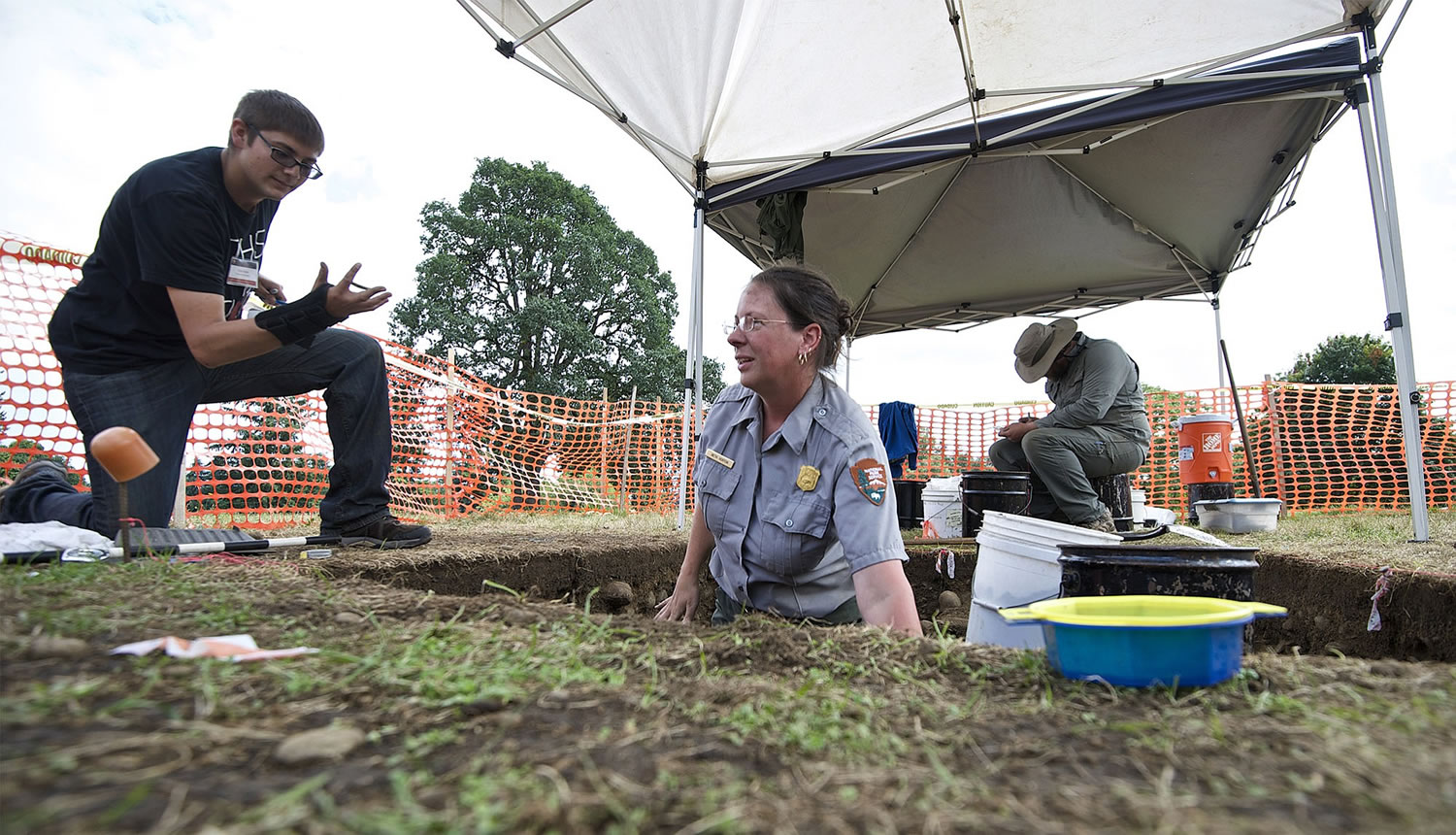The nonprofit Community Military Appreciation Committee is accepting contributions to reconstruct the historical Parade Ground flagpole. Go to www.cmac11.com.
To track a historical flagpole at Fort Vancouver, an archaeology team is looking straight down.
Beth Horton, an archaeologist at Fort Vancouver National Historic Site, is directing the work on the Parade Ground just south of Officers Row. They’re excavating the spot where the American flag flew from 1854 to 1879, just across the street from the Grant House.
The work is part of this year’s summer field school, which gives college students hands-on experience at an archaeological dig.
There also is a practical side to the project. In cooperation with the nonprofit Community Military Appreciation Committee and the city of Vancouver, the Park Service officials hope to rebuild the flagpole. It would become the primary flagpole at Fort Vancouver National Historic Site.
They were able to identify the location through archived maps and magnetic imaging, which can read changes below the soil surface.
They’ve excavated to a depth of almost 3 feet, and “we’re not to the bottom of the Army’s excavation yet,” Horton said.
There is no standard depth dictated in an Army manual for flagpole installations, she said.
“I’ve seen them exposed at 3 feet, and at much greater depths,” Horton said.
Tuesday’s findings included a curved piece of lead.
“We’re not sure what it was used for yet,” Horton said. “We’re unsure if it was refuse or had a function. We’ve found fragments of glass from different bottles, including patent medicines, so they were throwing refuse into it.”
The excavators have unearthed the ends of two intact logs about 4 inches in diameter that might have been used for cribbing, or the flagpole’s below-the-ground support structure.
Work is scheduled to continue through next week. Field school administrators are not sure whether they will extend work into August or secure the site and resume work at next year’s field school.
When they do finish this season’s work, they will cover the excavation with a special fabric, measure precisely how far down that barrier is, and then backfill the hole with soil that will be removed next year.




